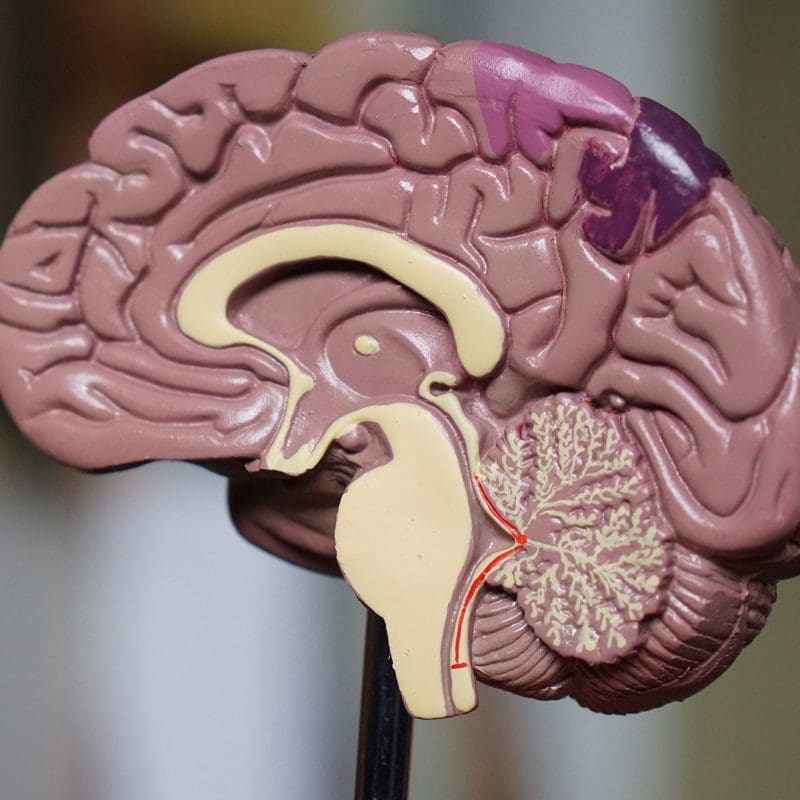Post-traumatic stress disorder typically follows a stressful event that the human mind can’t comprehend or wants to forget. Most of the time, PTSD is thought to only happen to those in war zones or combat situations, but the truth is PTSD can happen to anyone for any reason. What’s even more perplexing is that symptoms of PTSD don’t present the same in individuals who experience the same traumatic event.
Furthermore, there is a lot of debate surrounding the use of neurofeedback for treating PTSD. Some people swear by its efficacy, while others claim it does not help. So, what is the truth? Does neurofeedback help with PTSD or not? We’re glad you turned to Peak Brain Centers for something like this. So, let’s take a look at how neurofeedback training can help you.
What Does PTSD Do to the Brain?
When you experience something traumatic in life, your brain puts your body into “fight-or-flight” mode, which prepares you to either defend your bodily safety or run for the hills – just to stay alive. As a result of this state, your brain floods your system with hormones like adrenaline and norepinephrine. These chemicals give you a burst of energy, make your heart beat faster, and prepare you for whatever’s about to come. Your brain will also shut off some unnecessary functions like short-term memory storage. This explains why remembering all the events of a stressful or traumatic situation is difficult for many people – The brain simply isn’t storing any of the information needed to recollect.
In the case of PSTD, the brain gets stuck in the “danger” mode. Even when you’re no longer in danger, your brain will stay in this heightened state of alertness, making it difficult to remember things, regulate your emotions, sleep, and even engage in normal day-to-day relationships. And this state of alertness never goes away for individuals suffering from PTSD – The body and mind simply learn to adapt and function.

Does Neurofeedback Work for PTSD?
While there is no medical cure for PTSD, much research has been done, lending credibility to various therapies that have shown success in helping people mitigate the symptoms and deal with the trauma. Neurofeedback training is one of those studied.
In a recent study done by Lawson Health Research Institute and Western University, researchers found that neurofeedback training does, in fact, help mitigate or eliminate the negative impacts and symptoms of PTSD. In the study, 72 individuals were tested, 36 of which had been diagnosed with PTSD. Of those diagnosed, 18 were asked to participate in neurofeedback over the course of 20 weeks. By the end, researchers were stunned to find that over 61% of those tested no longer registered symptoms that led to their original diagnosis.
What Types of Neurofeedback Training Work?
Even within our own community of therapy and training, there are various ways of training the brain. in people with PSTD, there are two training protocols we’ve found to be effective.
ILF (infra-low frequency) Training for Trauma
In these sessions, we train the slowest brainwaves, which are responsible for regulating the brain’s response to stress. If these brainwaves aren’t regulated properly, the brain can easily become agitated or triggered by insignificant events.
The goal of using ILF is to take the brain from an aroused state to a much calmer, more relaxed state. Patients who go through these sessions tend to leave feeling emotionally and physically calmer.
Alpha-Theta Training
The alpha and theta brainwaves are both responsible for introspection and relaxation. So, as you can imagine, during the alpha-theta training protocol, we focus on regulating these brainwaves so patients feel more relaxed yet are capable of self-reflecting without reliving their trauma.
During the session, patients find themselves in that happy wakefulness/sleep phase, which makes them happier and calmer as they process all of that trauma or emotional distress in a new and healthier way. Afterward, they often tell us they are able to reflect on their memories and emotions without feeling disturbed, overwhelmed, or traumatized.
What Are the Benefits of Neurofeedback for Those With PTSD?
If you’ve been following us or reading our blogs for a while, then you likely already know that neurofeedback is a non-invasive approach to mitigating the symptoms of various mental health issues, PTSD included. In this case, neurofeedback training works to calm both the sympathetic nervous system and the parasympathetic nervous system. We know this because the sympathetic nervous system is what’s keeping your brain and body in fight-or-flight mode, not allowing the parasympathetic nervous system to reach harmony.
By training the brain and reminding it that you’re no longer in a state of danger, we can encourage the parasympathetic system to take control. As a result, many of our patients experience immediate relief in sleep, digestion, concentration, relaxation, and overall physical health.
Additionally, neurofeedback helps the brain establish new, healthier electrical impulse pathways, which helps them interact with the world in a more positive manner. This factor is something most people with PTSD struggle to do and is an encouraging result of training in our clinic.

Treat Your PTSD With Neurofeedback
Want to experience life without PTSD? Then contact Peak Brain Centers for a free consultation. Our PTSD training will help break that cycle of trauma in your mind, allowing you to get back to the things you enjoy most in life, whether it be friends, family, or just living. We can also help with migraines, depression, and brain fog – All the things that could be holding you back from living your best life! Call us today at (765) 667-9720.
Photo by Christian Erfurt on Unsplash
Photo by Robina Weermeijer on Unsplash
Photo by Artem Beliaikin on Unsplash






